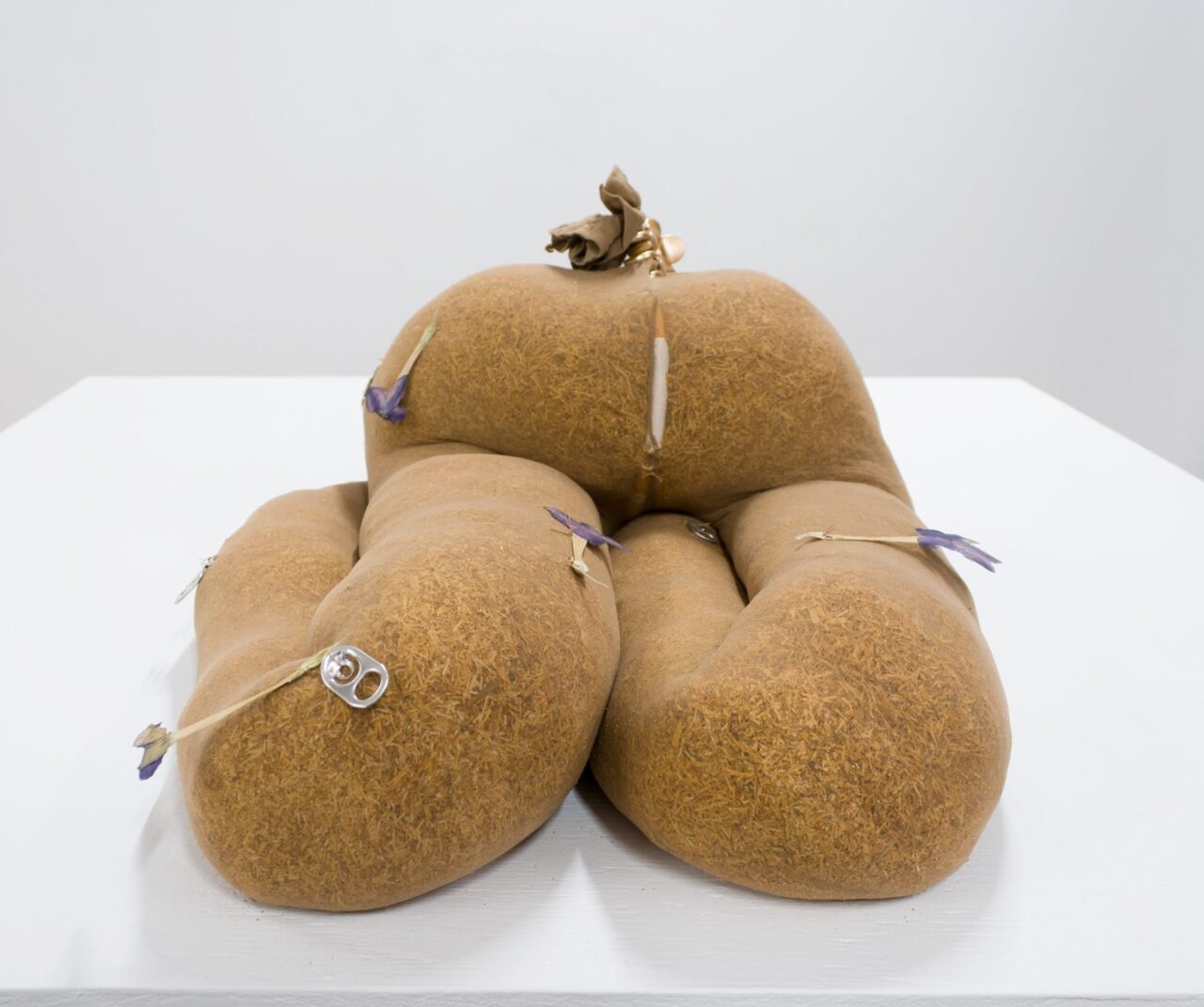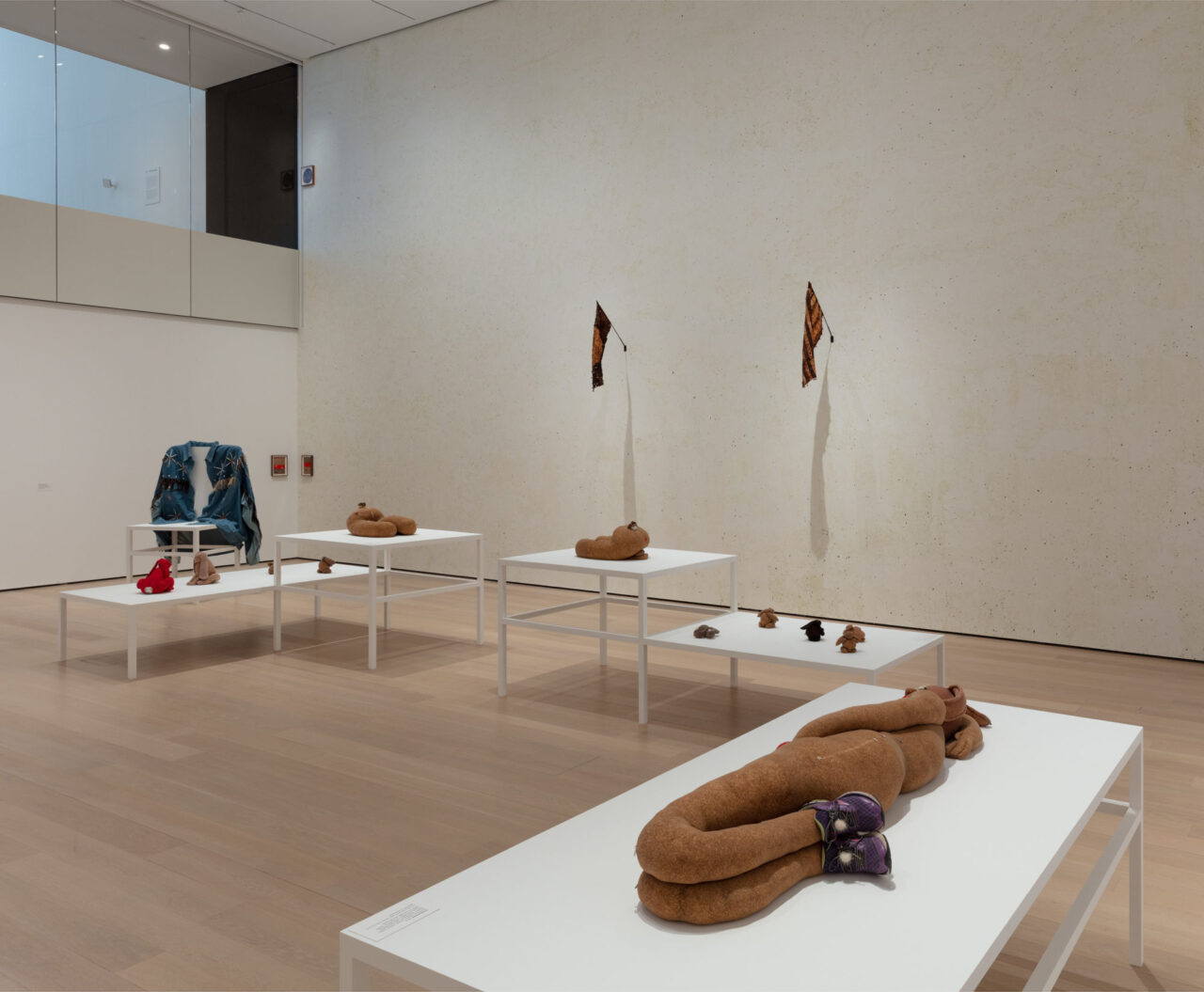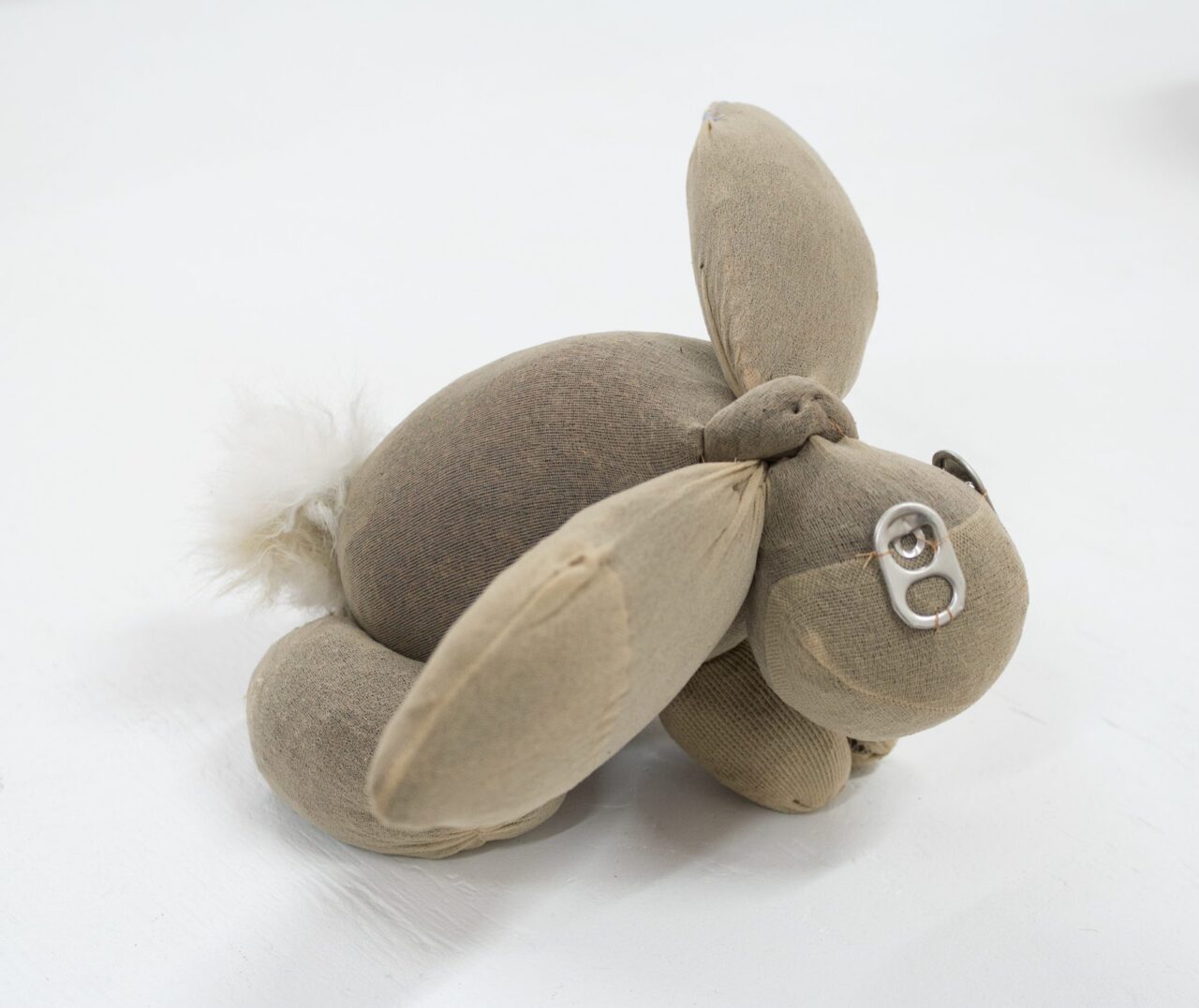Gabrielle LâHirondelle Hill Sees a Wide-Open World, Freed from the Impossible

Installation view of 'Projects: Gabrielle LâHirondelle Hill,' The Museum of Modern Art, New York, April 25, 2021 â August 15, 2021. (Courtesy / ÂĐ2021 The Museum of Modern Art. Photo: Denis Doorly)
Posted on | Updated
The artist and ČŦÃņēĘÆą faculty member on materiality, storytelling, and how decentering dominant histories can foster a better future.
Oftentimes, visions of the everyday can pass us by without making us blink.
For Gabrielle LâHirondelle Hill, multidisciplinary artist, writer and assistant professor in Emily Carr Universityâs Audain Faculty of Art, the everyday is a space that has only just begun to reveal its secrets. In the commonplace, she sees a rich material vocabulary, brimming with potential. In the concept of âordinary,â she sees a âhierarchy of knowledgesâ overdue for dismantling.
To engage artistically with such concepts, Gabrielle fittingly starts with what is closest at hand.
âI often work with materials that are sourced from plants, or dollar stores, or things I find in the street; things I already see around myself in my life,â she says. âI think materials definitely speak a language. I hope mine talk about everyday experiences, the charge and the possibility in those common things.â
Some days, says Gabrielle, a wander around a neighbourhood can be enough to both renew a connection to the here-and-now, and to locate herself within the broader movement of history.
âSometimes I just like walking down the street and picking thistles and dandelions and appreciating these tough little plants,â she says. âBut sometimes I learn about the stories of people who have left whatever object behind, and sometimes I can connect into larger sweeping narratives of change and history when I learn about the materials I work with.â

Gabrielle LâHirondelle Hill, Exchange, 2019. Pantyhose, tobacco, cigarettes, thread, tobacco flowers, aluminum can tabs, spider charm, and plastic metal hair clip. (Courtesy the artist and Unit 17, Vancouver, and Cooper Cole, Toronto. ÂĐGabrielle LâHirondelle Hill)
This keen sense of how materials can both speak to connections and unearth the elemental in the everyday is clearly on display in the works that make up Gabrielleâs current solo exhibition at the Museum of Modern Art (MoMA), in New York City. Titled , the show runs through Aug. 15, as part of MoMAâs Elaine Dannheisser Projects Series.
Each object and composition in Projects includes sourced and found materials such as pantyhose, tobacco, fur, beer tabs, thread, Crisco oil, magazine cutouts and wild plants. According to the museum, Gabrielleâs âuse of tobacco as a key material alludes to the plantâs complex Indigenous and colonial histories.â
Gabrielle herself adds that the flow of ideas implied by these materials is nuanced and indirect: poetic rather than symbolic; more research than rhetoric.
âI know that the stories I see in certain materials are not necessarily communicated to anyone who just looks at my sculptures,â she says. âSo, partly, I donât think of the works as being able to communicate. But I do think of them as a research process for myself, an act of communication between myself and ideas and the materials.â
Specifically, Gabrielle says sheâs interested in
investigating the fallacies embedded in Western or Eurocentric notions
around knowledge, classification and value. She is likewise keen on
exploring alternative models for understanding and for building
relationships between individuals, and between people and place, or
land.

Installation view of Projects: Gabrielle LâHirondelle Hill, The Museum of Modern Art, New York, April 25, 2021 â August 15, 2021. (Courtesy / ÂĐ2021 The Museum of Modern Art. Photo: Denis Doorly)
Apart from informing the sculptures and drawings in her MoMA show, this last concern was central to Gabrielleâs choice of texts for a recent CAG Reads book club presentation. During the event, she treated participants to readings of works by three authors, followed by a roundtable discussion. The texts â Tonyâs Story by Leslie Marmon Silko, Against the Police by Miguel James (translated by Guillermo Parra) and The Author of the Acacia Seeds by Ursula K. Le Guin â each âexplore rebellion, refusal and oppositionâto the state, in art and otherwise,â according to the CAG (Contemporary Art Gallery).
Le Guinâs Acacia Seeds imagines traditions of non-human literature, where birds write texts âin wings, neck and air,â and literature experts weigh in on a manuscript written in seeds. In Marmon Silkoâs story, the eponymous Tony canât understand why his best friend Leon keeps talking about ârightsâ and âequalityâ in the face of a mortal threat from an eyeless, malevolent shade â a conflict Leon sees as ongoing harassment by a racist police officer. And Miguel Jamesâ poem explicitly frames the authorâs entire output â past, present and future â as anti-police, rendering the message something close to a mantra through relentless repetition.âĻ
âI am extremely curious about what lies outside the Western knowledge system, Western ideas of the knowable,â Gabrielle says.

L: Spell #6, at the bus stop. 2019. Tobacco-infused Crisco oil, oil paint, magazine cutouts, and tobacco flower on paper. Collection Denis Walz. | R: Spell #9, sunrise on clark. 2019. Tobacco-infused Crisco oil, oil paint, wildflowers, tobacco flowers, magazine cutout, spider charm, and thread on paper. Private collection. Both by Gabrielle LâHirondelle Hill. (Both images courtesy the artist and Unit 17, Vancouver, and Cooper Cole, Toronto ÂĐGabrielle LâHirondelle Hill)
Indeed, all three works in her CAG reading engage with ideas about âan alternate possible world,â she continues, âand shouldnât that be the territory of artists?â
All three likewise concern the role of the artist, and are âdriven by a response to devastating state violence: a racist killer cop, a murderous soldier, the police in Jamesâ life.
âI chose these texts before the brutal murder of George Floyd by the police, and before the uprising that came after. However, now we are in this moment where everyone is talking and thinking about police violence (not just those who experience it every day). I think these stories offer much to think about for artists and writers who are reeling from this state violence right now.â
But itâs not just artists for whom these kinds of stories are important. Everyoneâs life is in some way touched by institutions. And institutions are, with few exceptions, at least partly shaped by forces that have historically marginalized Black people, Indigenous people and people of colour. Schools, Gabrielle notes, are no exception.
âI think the kinds of thinking, researching, and knowing that weâre taught in school in Canada are rooted in colonialism and capitalism,â she says. âThe history of research and empiricism of course are totally bound in empire.â

Gabrielle LâHirondelle Hill. Mint. 2019. Pantyhose, beer-can tabs, tobacco, rabbit fur, and thread. Private collection, New York. (Courtesy the artist and Unit 17, Vancouver, and Cooper Cole, Toronto ÂĐGabrielle LâHirondelle Hill)
As a teacher, Gabrielle encourages her students to consider âdecenteringâ dominant histories and ways of learning. Her classes include discussions around âopening ourselves to alternate modes, non-Western modes, to dreaming, movement, learning from our materials.â Guests such as Squamish textile artist and weaver Tracy Williams are invited to speak to Gabrielleâs students, as well.
This approach exposes students directly to material practices and research methods rooted in non-Western ways of knowing. It also inverts the centuries-old âtop-downâ method of teaching, whereby a select group of canonical works â and their correct interpretation â are handed down from teacher to student. That way of working is, by definition, exclusive, Gabrielle notes. Overturning that tradition opens the door for the validation of both countless alternative histories, and of the people they represent.
âI think the value in upending the hierarchy of knowledges is that it affirms the truths of so many people who have been depicted as âwithout knowledge,ââ Gabrielle says. âIt also really opens up for everyone the possibilities of what art can be, what thinking and experiencing can be.â
Glimpses of such possibilities are what Gabrielle sees when she reads Acacia Seeds or Tonyâs Story. And they are part of what she hopes to foster within her practice, as well as in her classroom.
âWģóēđģŲ Acacia Seeds offers as an idea of art â and what I hope to offer my students, or even myself â is a wide-open world, free from all the things we thought we already knew were impossible.â
--
Visit ČŦÃņēĘÆą online today to learn all about studying in the Audain Faculty of Art.